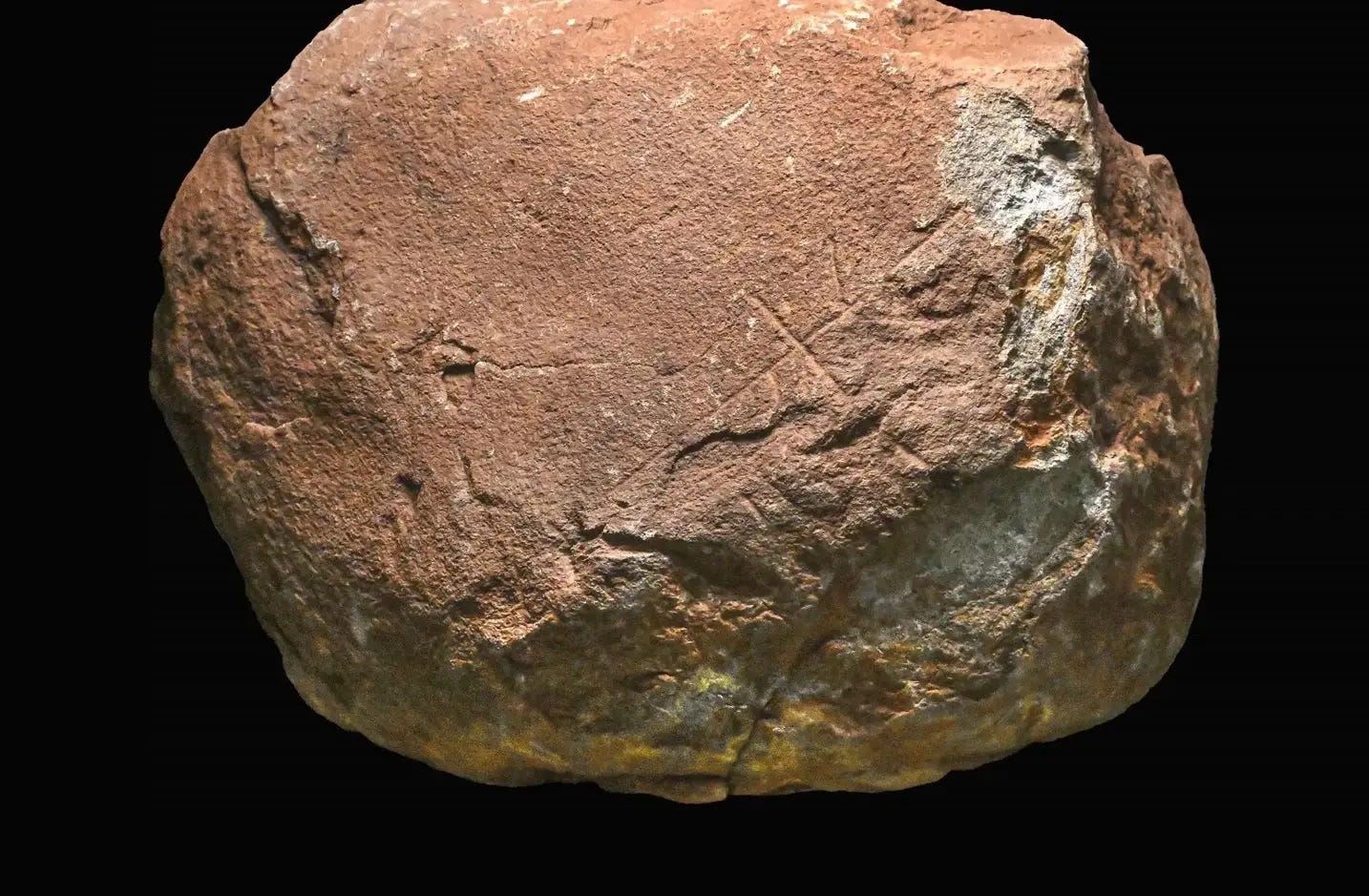🧐 Ancient Beat #148: Forts, carvings, and Noah's Ark?
This is issue #148 of Ancient Beat, let’s get into it.
Here’s the latest ancient news. 👇
🗞 Ancient News: Top 5
Discovery at Las Chapas Could Be the Oldest Stone Carvings of Human Origin — Archaeologists excavating at the Coto Correa site in Marbella, Spain, have uncovered a gabbro stone block featuring carved markings that may date back 200,000 years. This discovery suggests human presence in the region during the Early to Middle Palaeolithic period. The carvings could predate the oldest known cave art by approximately 100,000 years. To verify the age, researchers are conducting quartz analysis on sediment samples and employing 3D scanning to document the markings in high resolution. If confirmed, this finding would position Coto Correa as a significant reference point for understanding Palaeolithic art and early human migration into Europe.
Ancient Dorset Burial Site Raises Questions Over Age of Stonehenge — Recent radiocarbon analysis has re-dated the Flagstones monument near Dorset, England to approximately 3200 BCE, predating Stonehenge's initial construction by about two centuries. The site features a 328-foot diameter circular ditch composed of intersecting pits. Excavations revealed at least four burials within the enclosure pits: a cremated adult and three non-cremated children, along with three partial adult cremations elsewhere. A later burial of a young adult male under a large sarsen stone at the center occurred roughly a millennium after the monument's initial use. The similarities between Flagstones and the first phase of Stonehenge, previously dated to around 2900 BCE, suggest that Stonehenge might have been influenced by or even a replication of Flagstones. This discovery challenges existing timelines and enhances our understanding of early Neolithic ceremonial monuments in Britain.
LiDAR Study Reveals 5,000-Year-Old Fortified Settlements — In Romania's Neamț County, archaeologists have utilized LiDAR technology mounted on drones to detect fortified settlements dating back approximately 5,000 years, corresponding to the Eneolithic and Bronze Ages. These settlements are strategically located on elevated terrains, offering extensive visibility, and are reinforced with ditches and earthen mounds to enhance defense. Some ditches extend several hundred meters, indicating significant communal effort in their construction. This discovery provides valuable insights into the defensive strategies and social organization of prehistoric communities in the region.
Mount Ararat and Noah's Ark Research Team Discovers Marine Fossils Suggesting Ancient Flood — Researchers have been investigating the Durupinar formation near Mount Ararat, Turkey, since 2021. This 538-foot geological structure resembles a ship and aligns with the biblical dimensions of Noah's Ark. Recent analyses of nearly 30 rock and soil samples revealed clay-like materials, marine deposits, and seafood remnants, including mollusks, dating between 3500 and 5000 years ago, corresponding to the Chalcolithic period (5500 to 3000 BCE). These findings suggest that the area was once submerged, and this could support theories of a significant flood event in the region. The Durupinar formation, discovered in 1948, has long intrigued researchers due to its ship-like shape and proximity to Mount Ararat, traditionally identified as the resting place of Noah's Ark.
Archaeologists Uncover the Oldest Known Partial Face Fossil of a Human Ancestor in Western Europe — Archaeologists excavating the Sima del Elefante site in Spain’s Atapuerca Mountains have uncovered a partial facial fossil of a hominin dating between 1.1 and 1.4 million years ago, making it the oldest known human ancestor remains in Western Europe. The fossil consists of a left cheekbone and upper jaw and shares similarities with Homo erectus, though it has some distinct anatomical differences. This discovery provides evidence that early human ancestors ventured into Europe far earlier than previously confirmed. The Atapuerca region has also yielded remains of Neanderthals and early Homo sapiens, highlighting its importance in human evolutionary research.
That’s it for the free Top 5! If you’re a free subscriber, sign up for the paid plan for another 19 discoveries and 5 recommended pieces of content covering cats, perfumed sculptures, Neanderthals, lost cities, and Celtic hoards.
Until next time, thanks for joining me!
-James
Twitter: @jamesofthedrum
P.S. Here’s my Buy Me A Coffee link if you’d like to support my efforts with a donation.
P.P.S. If you want access to the paid version but it’s a little too steep for you right now, just email me — I want this to be accessible.
P.P.P.S. Paid members, read on!
🗞 Ancient News: Deep Dive
Keep reading with a 7-day free trial
Subscribe to Ancient Beat to keep reading this post and get 7 days of free access to the full post archives.


